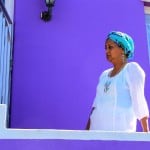When people first learn about the culture and traditions in Mauritius, they’re often surprised. Here’s a guide that explains why…
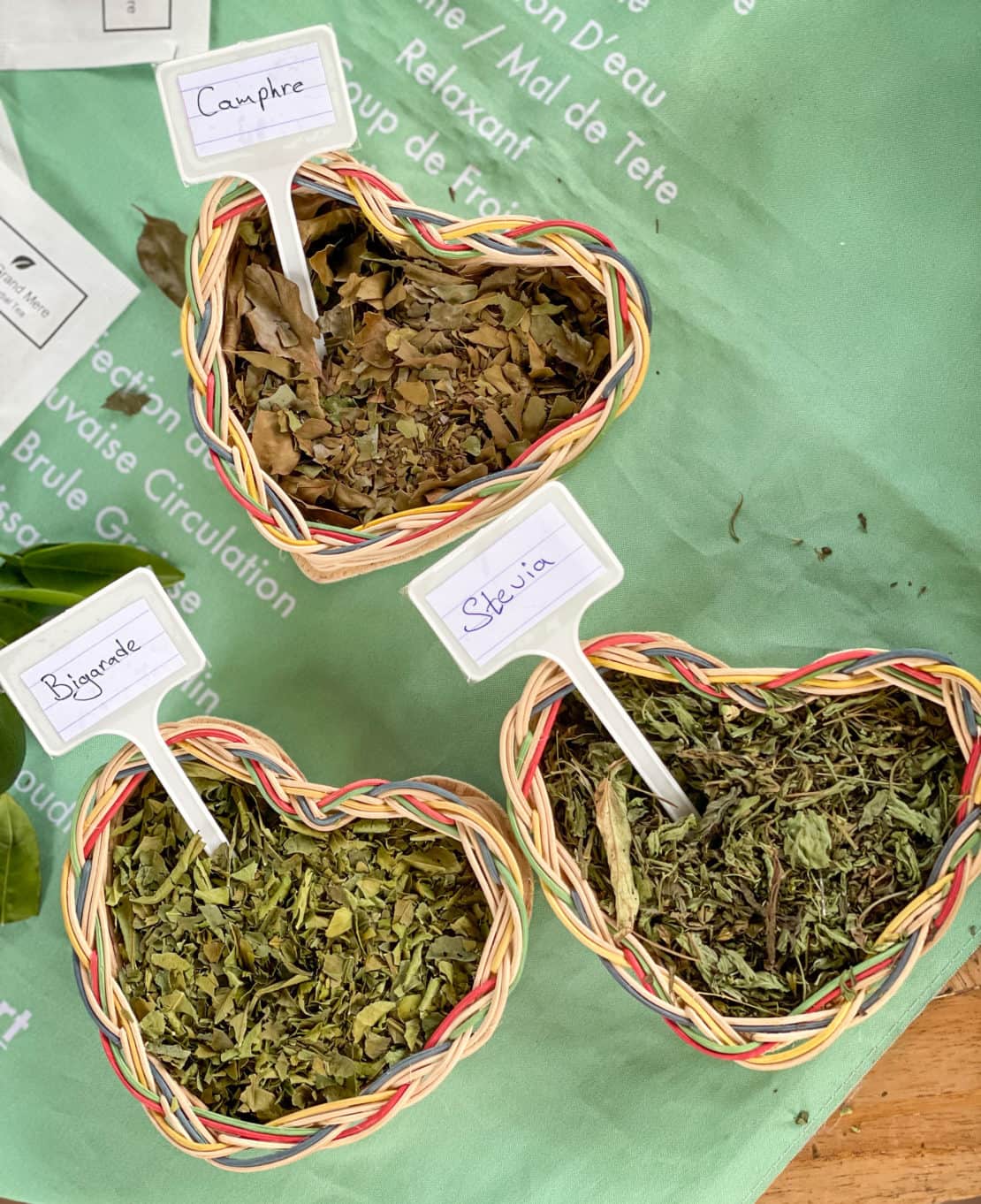
Understanding tradition and culture in Mauritius
In Mauritius, the coral reefs cause a curious effect. Forming almost a complete circle around the island, they protect its shores from the menace and thrashing of crashing, Indian Ocean waves.
Instead, the shoreline skims like glass, with a gentle sea breeze and a carefree lilt that betrays the complexity of the nation’s past.
You don’t have to travel far, however, to get a taste of some of the traditions and cultures of Mauritius in all their beauty and rich delicious glory.
One hotel, in particular, La Pirogue from the newly rebranded Sunlife collection, makes the transition easy for foreign visitors. Dancers greet guests on arrival and staff wheel sliced and pickled fruit snacks with chilli around the resort, providing, quite literally, the first taste of the real Mauritius.
But there’s no need to stop there. Here’s a starter guide to the cultures and traditions of Mauritius and what makes this island nation who she is. Whether you plan on never leaving the resort. Or feel the urge to venture further afield.
Disclosure: on this latest visit to Mauritius, I travelled in partnership with Sunlife collection resorts to celebrate their rebranding. As ever, as always, I kept the right to write what I like, otherwise, what’s the point? Also, if you book or buy through any of the links on this page, we may earn a small commission at no extra cost to you. Cheers!
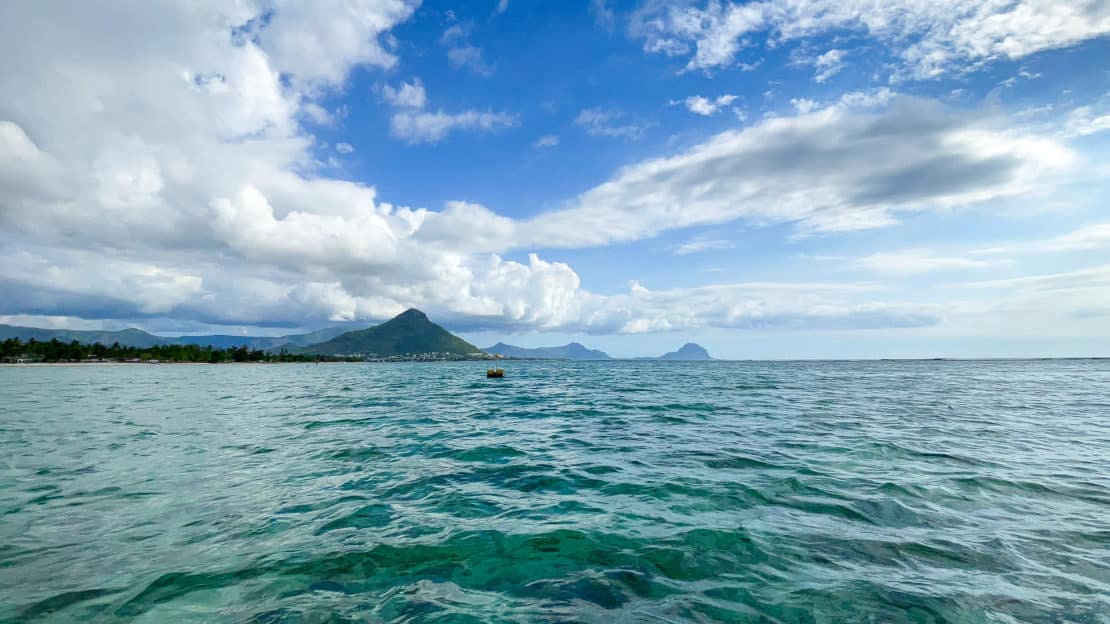
Mauritius – A Brief History
It’s hard to believe now but the island of Mauritius remained uninhabited until the early 16th century. Records show that Arabs visited during the Middle Ages, but the Portuguese were the first to establish a temporary base on the island in 1507.
Since then, though, different influences poured in, resulting in the culture and traditions you find in Mauritius today.
European Powers
The Portuguese were followed by the Dutch in 1598 and then the French from 1715. Mauritius even became known as the ‘Isle of France’.
The French government brought enslaved people from South Africa to work on the sugarcane plantations throughout the 18th century, and the money poured in. Port Luis became a naval base and shipbuilding centre, drawing in more workers from India, who each arrived with various levels of freedom. Mauritius had established itself as an important centre for trade.
From French to British
French rule ended with the British invasion in 1810, which soon brought about the abolition of slavery. Former enslaved people became rightful citizens of Mauritius and further waves of Indian and Chinese immigration continued.
Independence
Somewhat surprisingly, given the obvious French influence that remained, Mauritius remained under the British crown right up until 1968. Then came the peaceful, although still controversial, transition to independence. And Mauritius remains part of the Commonwealth today.
Why so much history? Because it’s impossible to even start to understand the culture and traditions of Mauritius without knowing the backstory.
Ethnic Groups & Languages in Mauritius
As a result of all that, today’s Mauritian population is formed from the descendants of Africans, Indians, Chinese, Dutch, French, British, and other populations that later arrived on the island.
Even today, the UNESCO World Heritage Site at Aapravasi Ghat stands as a reminder of how this island nation was built around sugarcane harvesting and trade.
The official language in Mauritius is English. However, more often than not, you’ll hear people speaking French. Most ethnic groups in Mauritius understand and speak Creole, a dialect that evolved from pidgin, the language that slave masters used to communicate with the people they enslaved.
French was, for a long time the language of the elite, used in business, literature, and arts. Even nowadays, the cultural and business sectors in Mauritius use French predominantly as a means of expression, although you’ll also hear some Indian languages like Bhojpuri and Tamil from time to time.
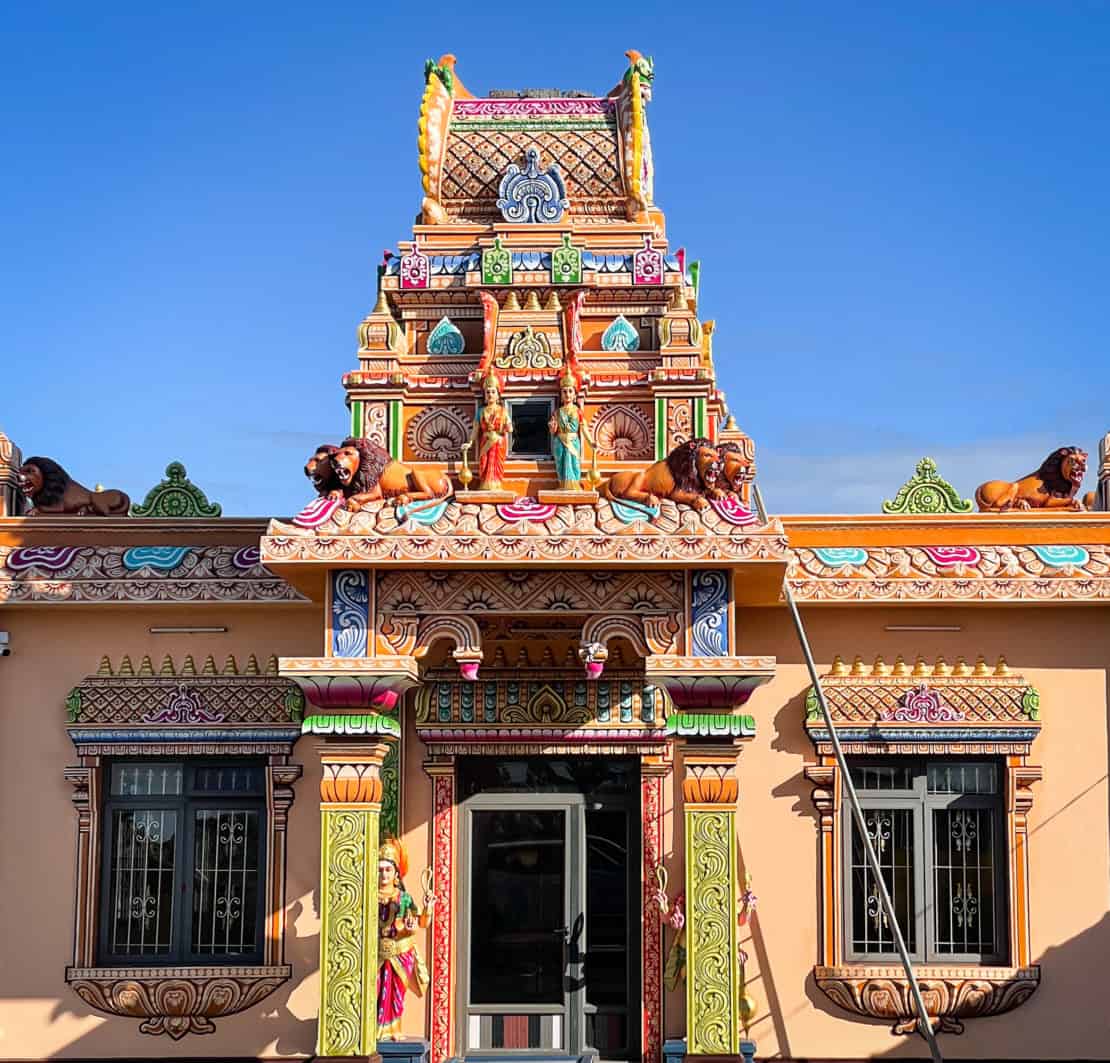
Religion & Traditions in Mauritius
Due to the many religious beliefs present on the island, Mauritius doesn’t have an official religion. Almost half of the population identifies as Hindu, followed by Roman Catholic, Islam, other Christian religions, and Buddhism.
What’s special about the Mauritian nation is its religious tolerance and syncretism. Many people practice two different religions at a time, and it isn’t unusual for people to take part celebrations of other religious groups.
Across Mauritius, you’ll clearly see Hindu temples and Catholic churches, while mosques can be harder to spot. Muslims express their religion through dress and dietary code, but they remain a religious minority on the island.
Mauritian Literature
Mauritian writers use French, English, Creole, or Indian languages to express themselves and, as you’d expect, you’ll find themes of multiculturalism and stories of social conflict.
Some of the nation’s most important writers are Ananda Devi, Malcolm de Chazal, Raymond Chasle, and Edouard Maunick.
J. M. G. Le Clézio, the winner of the Nobel Prize for Literature in 2008, is also of Mauritian heritage.
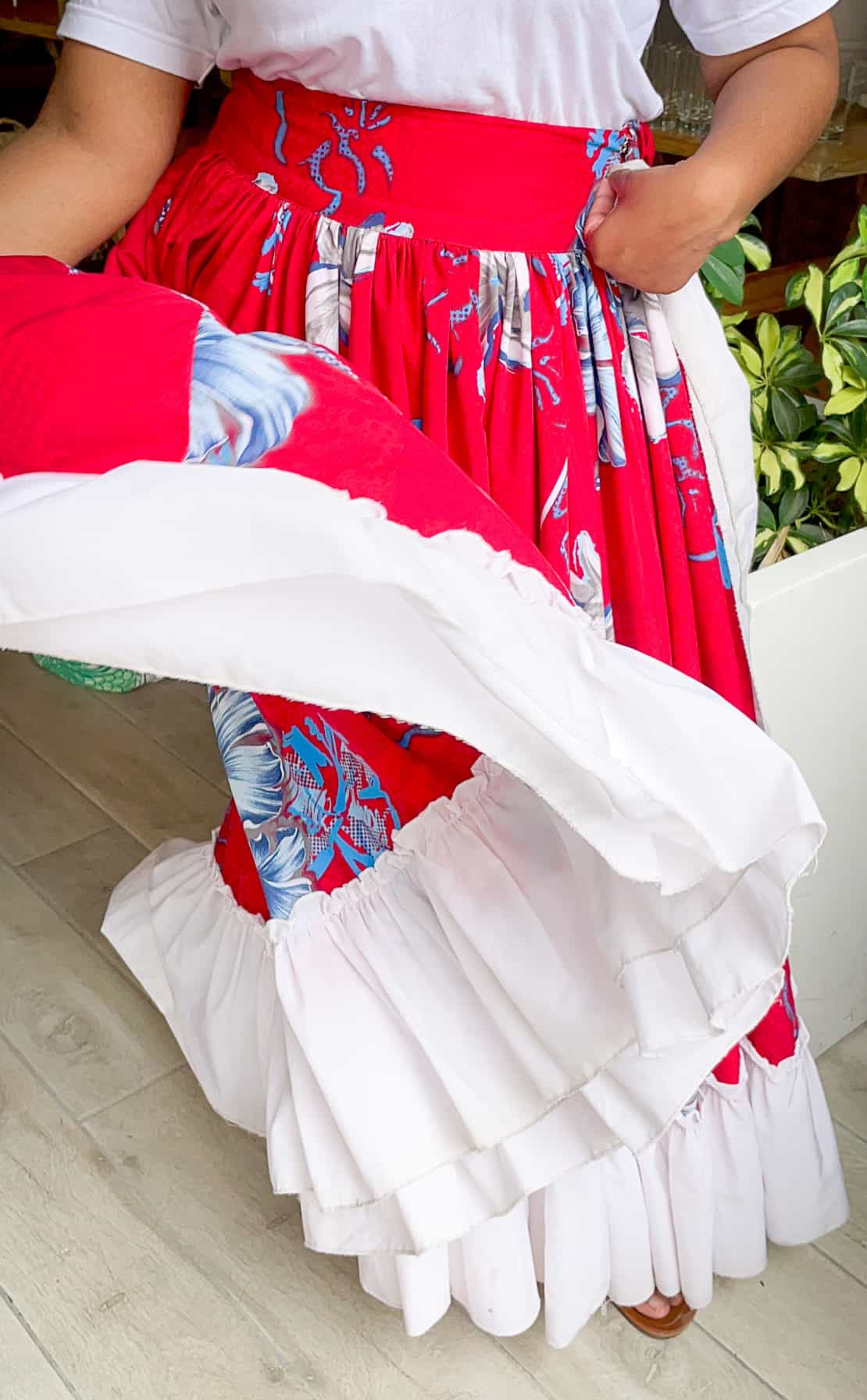
The Sega Dance
The Sega Dance has a powerful history. It dates back to the period of slavery, where those enslaved used it as a way to express their inner joy and love for life in the midst of absolute hardship.
The dance is traditionally accompanied by four instruments: the Ravanne, Triangle, Maravanne, and traditional guitar. Lyrics are typically in Creole, adding another layer to the traditions and cultures of Mauritius.
You’ll find the Sega danced at many luxurious resorts but it’s also found on public beaches during festivals, high days and holidays. The dance usually starts with the men standing in the dance area, waiting for the girls to shuffle toward them. The women wiggle their hips without lifting their feet from the floor whilst waving a colourful handkerchief or their long, flowing skirts. When the partners face each other, it’s all improvisation and expression of the soul.
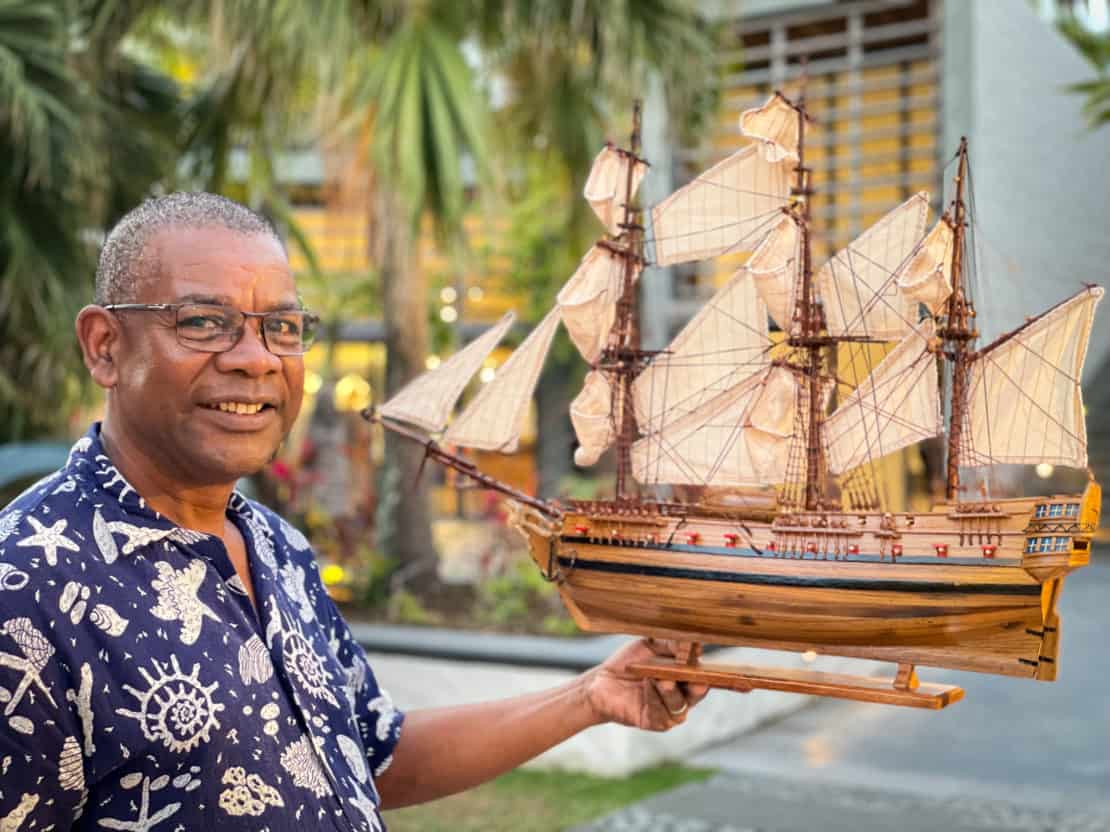
Traditional Mauritian Arts & Crafts
When you’re living on a small island in the middle of the Indian Ocean, you learn to improvise – and to recycle. Many traditional Mauritian arts and crafts involve using driftwood or upcycling old furniture.
Basketry is a popular craft, but ship modelling is seeing a renaissance. Crafted following the original plans of real ships, you’ll find these miniatures in the local markets at Louis Grand Bazaar or Mahebourg Central Market. Long Beach Hotel also runs an evening market on their piazza where you can buy these ships as well as other local arts and crafts (and rum!)
Mauritius is also popular for high-end jewellery. A handful of important diamond cutting and polishing factories produce beautiful stones for engagement rings and other occasions.
Festivals in Mauritius
Home to such a diverse population, Mauritius hosts religious festivals all year round. Here are the most important celebrations on the island:
Thaipoosam Cavadee – this Hindu festival is celebrated by the Tamil community between January and February. Groups of devotees march on the streets of Port Louis to the nearest Tamil-Hindu temple holding pots of milk on each side of a wooden structure to symbolise the burden of the sins they carry and for which they repent.
Chinese New Year – Mauritius has a strong Chinese heritage manifested in all aspects of its cultural and religious life. Every year, the Chinese community in Port Louis’ Chinatown celebrates the beginning of a new year with Chinese dragon dances and firecrackers. The date depends on the Chinese calendar, so it varies from one year to the next.
Maha Shivaratree – a large Hindu festival that attracts many Indians from outside Mauritius. It involves a pilgrimage to the sacred lake Grand Bassin or Ganga Talao, where offerings are brought to the gods. The festival usually takes place in February or March.
Holi – full of excitement and colour, this spring festival is held all over the island, even by people who aren’t Hindu. The night before Holi, Mauritians start bonfires and accompany them with singing and dancing to celebrate the triumph of good over evil. The next day, they splash coloured water and powder on each other in an incredible moment of energy.
Ugadi – the beginning of the Hindu New Year is celebrated in May or June. The Hindu population prepares by thoroughly cleaning their houses and decorating the entrances with mango leaves. Throughout the day, they pray and perform rituals for Brahma so they can have a prosperous new year.
Corpus Christi – 50 days after Easter, the Roman Catholics in Mauritius celebrate the descent of the Holy Spirit upon the Apostles of Jesus Christ with a big parade on the streets of Port Louis.
Diwali – in October or November, a dazzling festival takes over Mauritius – the Festival of Light. It is another celebration of the triumph of Good over Evil, but this time, Mauritians light candles and sparkling lights in their homes to guide Goddess Lakshmi to earth so they can get her blessing. A beautiful firework show completes the event.
Festival Kreol – celebrating Creole culture, this festival is held in Le Morne Village, usually in November or December and lasts for a week. It features plenty of concerts, plays, Creole food, songs, and Sega dancing.
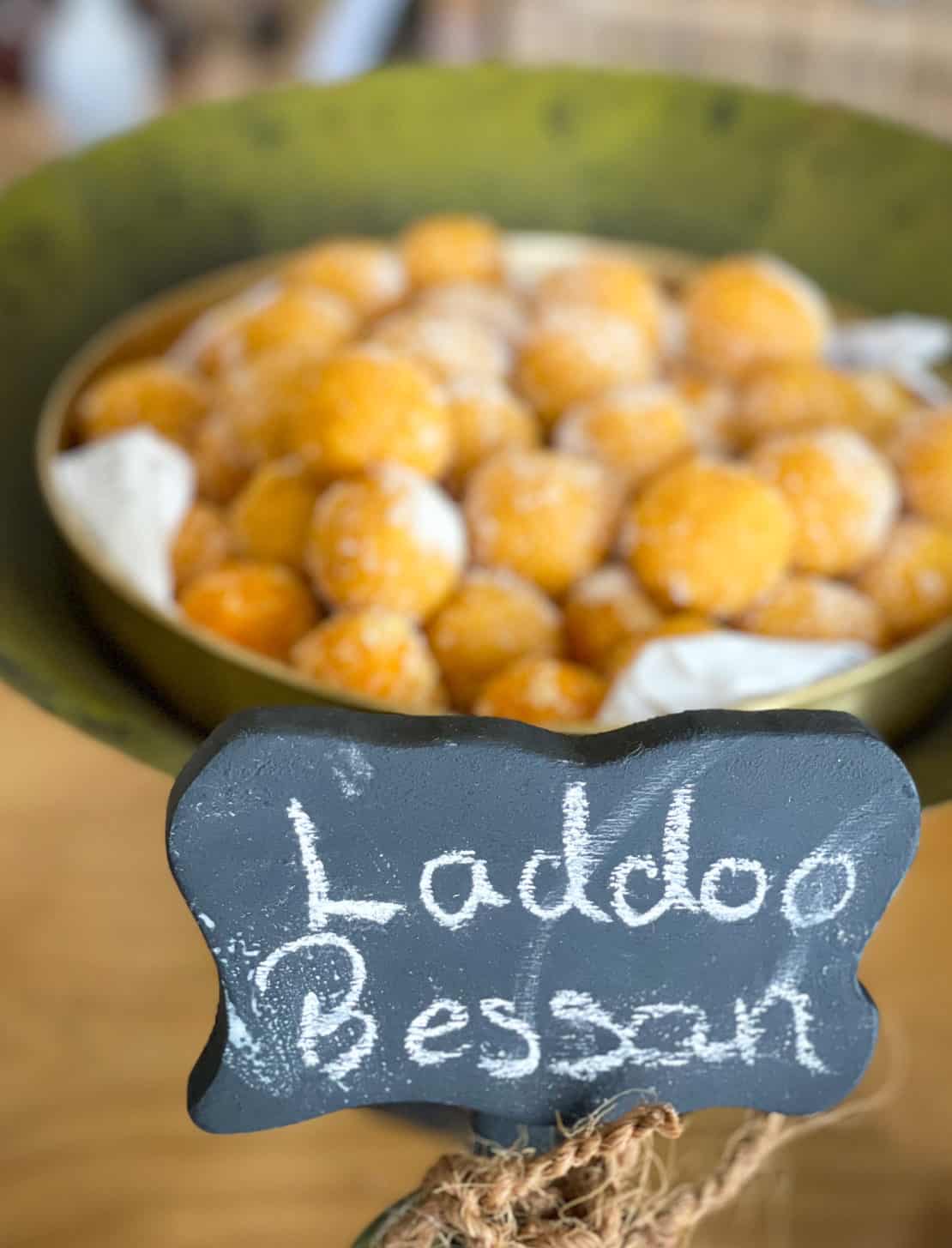
Mauritian Cuisine
Now, where else in the world did such great culinary influences collide as in Mauritius?!
Gastronomy in Mauritius mixes Creole, French, Indian, and Chinese influences into its own cuisine entirely. Local street vendors sell traditional snacks full of colour and flavour, while the hotel resorts are more imaginative than usual. Check out this article sustainable food tourism in Mauritius, for example.
As an island nation, you’ll find a wealth of fish and seafood. It’s fun to play “spot the foodie influence” among the Indian-like dholl puri, samosas and fruit drenched curries, the crumbly croissants and the Chinese chop suey. The Creole rougailles is another dish not to miss.
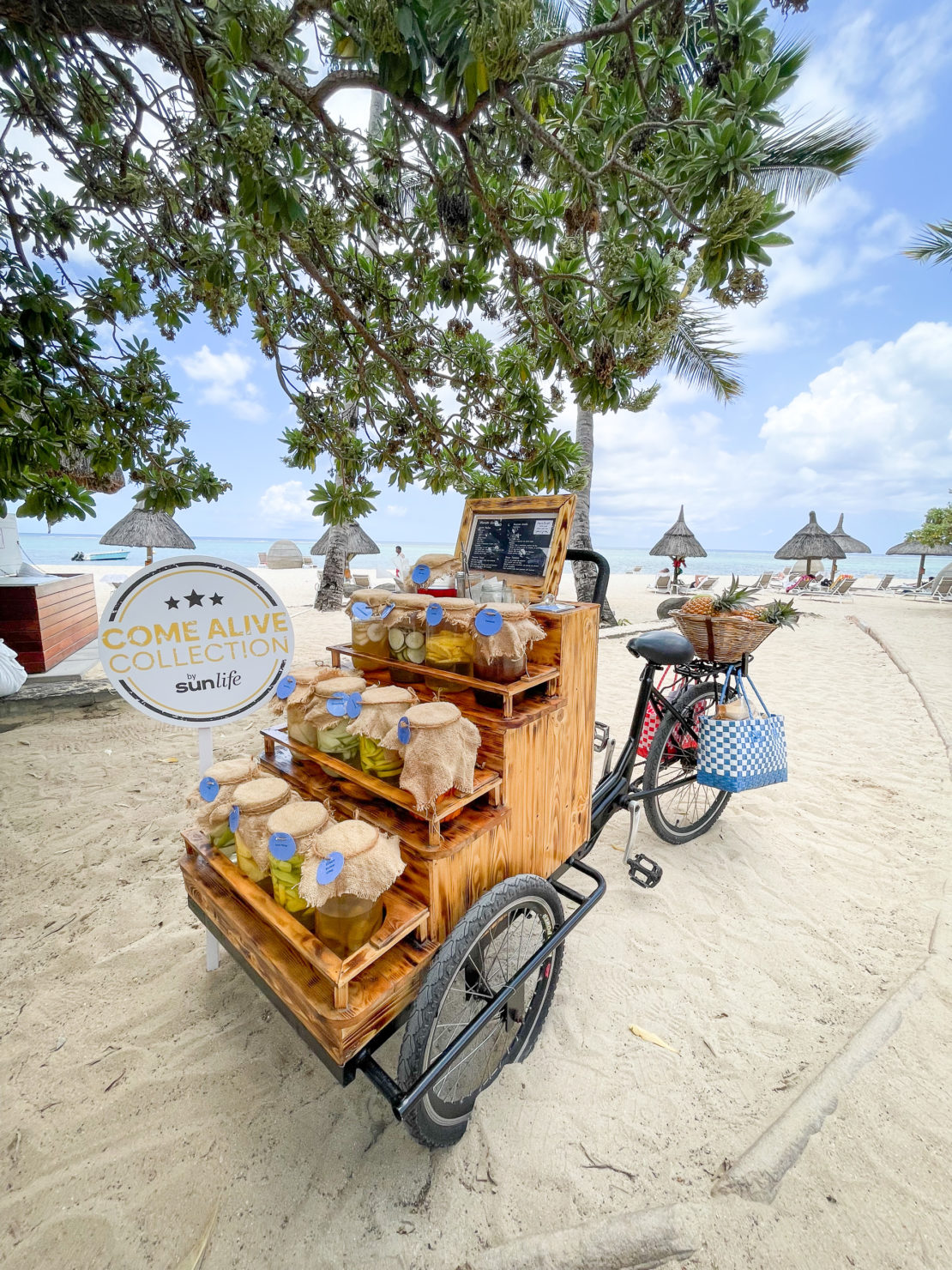
At La Pirogue, itself named after the traditional wooden fishing boat, it’s easy to try even more. Like the gateaux patte, a sweet potato cake. Then lasso bess, a firm and slightly sweet treat made from cassava. The maude pudding is very delicate and the vermicelle tastes almost savoury with a slight sprinkling of coconut dust.
And finally, of course, there is the rum. With Gold of Mauritius claiming to be the most traditional drink on the island.
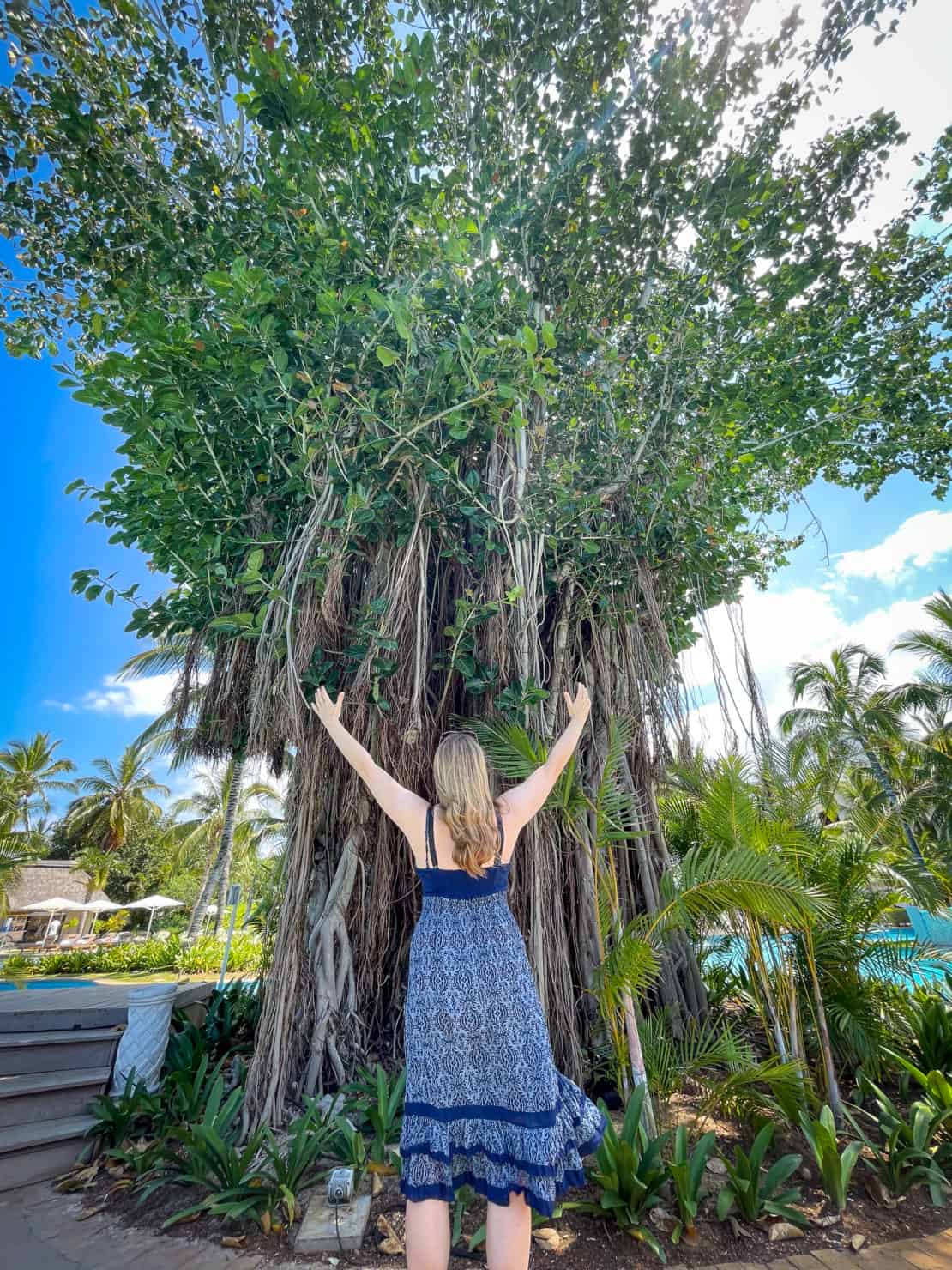
Eco-Tourism & the Economy
Does ecotourism count as a culture and tradition of Mauritius? I think it should.
In the past, Mauritius relied mostly on its sugar cane plantations to survive. Then the country’s economy moved to multiple sectors including textiles, seafood processing, information and communication technology, and financial and business services.
And, of course, tourism.
But in Mauritius, I’ve found some of the more groundbreaking approaches to sustainable travel and eco tourism. First, I covered the subject through this article on ecotourism in Mauritius here.
Then, on my last visit, I uncovered more through chatting to Ali Abdool, Sustainability Manager of the Sunlife resorts.
In addition to looking at recycling water, waste, candles and food, Sunlife has a few other projects I’d like to highlight.
First, their beehive and protected natural area at the Long Beach site. And second, their coral reef nursery.
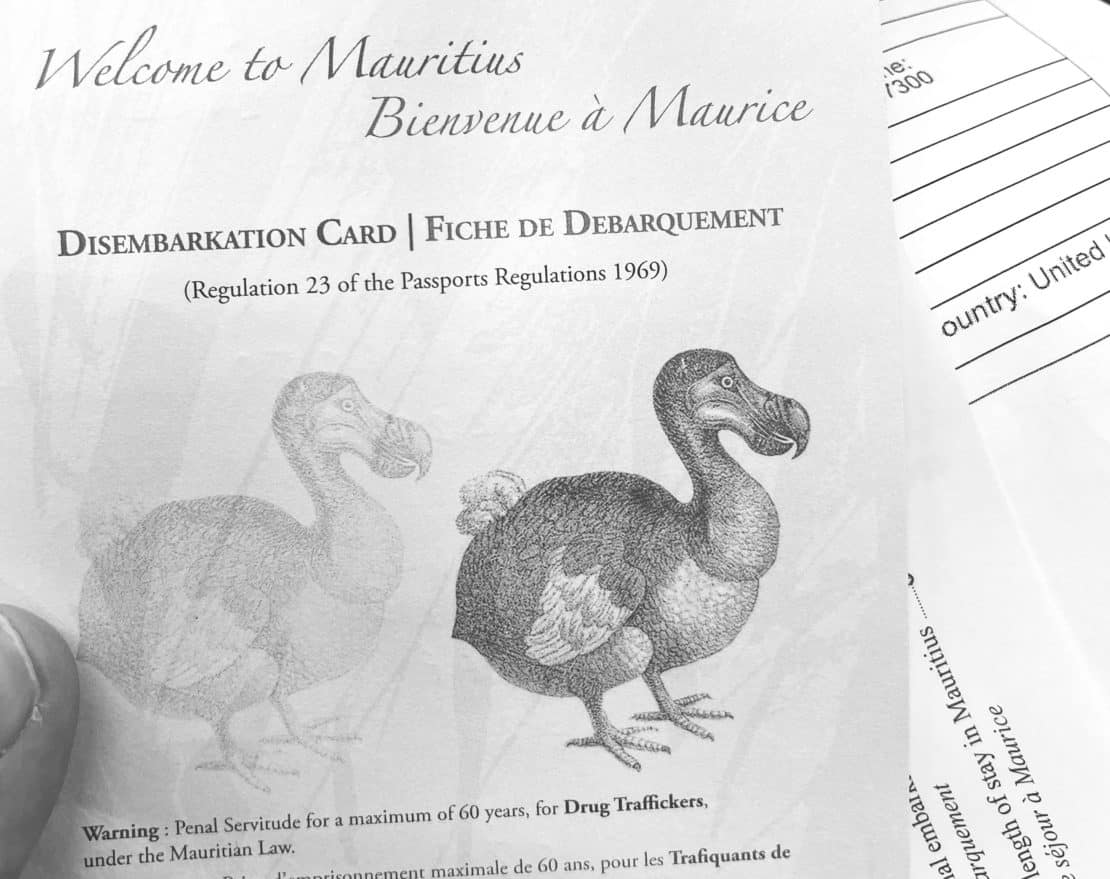
Conservation Area: From the Dodo to Palm Trees
In 1994, the hotel began a project to grow an indigenous garden, removing exotic trees and allowing the grounds to become self-seeding.
Sounds nice but what’s the big deal? Well, of the 700 or so Mauritian plants, only 150 are shared with the nearby Mascarene Islands and 40% of the total are found on Mauritius and Mauritius alone. And more worrying still, 98% of the endemic vegetation of Mauritius has already been destroyed.
In the island that used to be home to the Dodo, the threat of extinction is very real.
While the Mauritian government has a central indigenous island, the Sunlife hotels wanted to supplement those efforts by developing a seed bank of their own.
Most guests can arrange for a guided walk, where naturalists can point out the gastonia tree and Mauritian coffee tree and the white ebonies named after the Ile aux Aigrettes. And in case you’re feeling nervous, you won’t find snakes here – or anywhere on the island.
But I caught up with Paul Kirkby, the landscape manager, who talked more about this project.
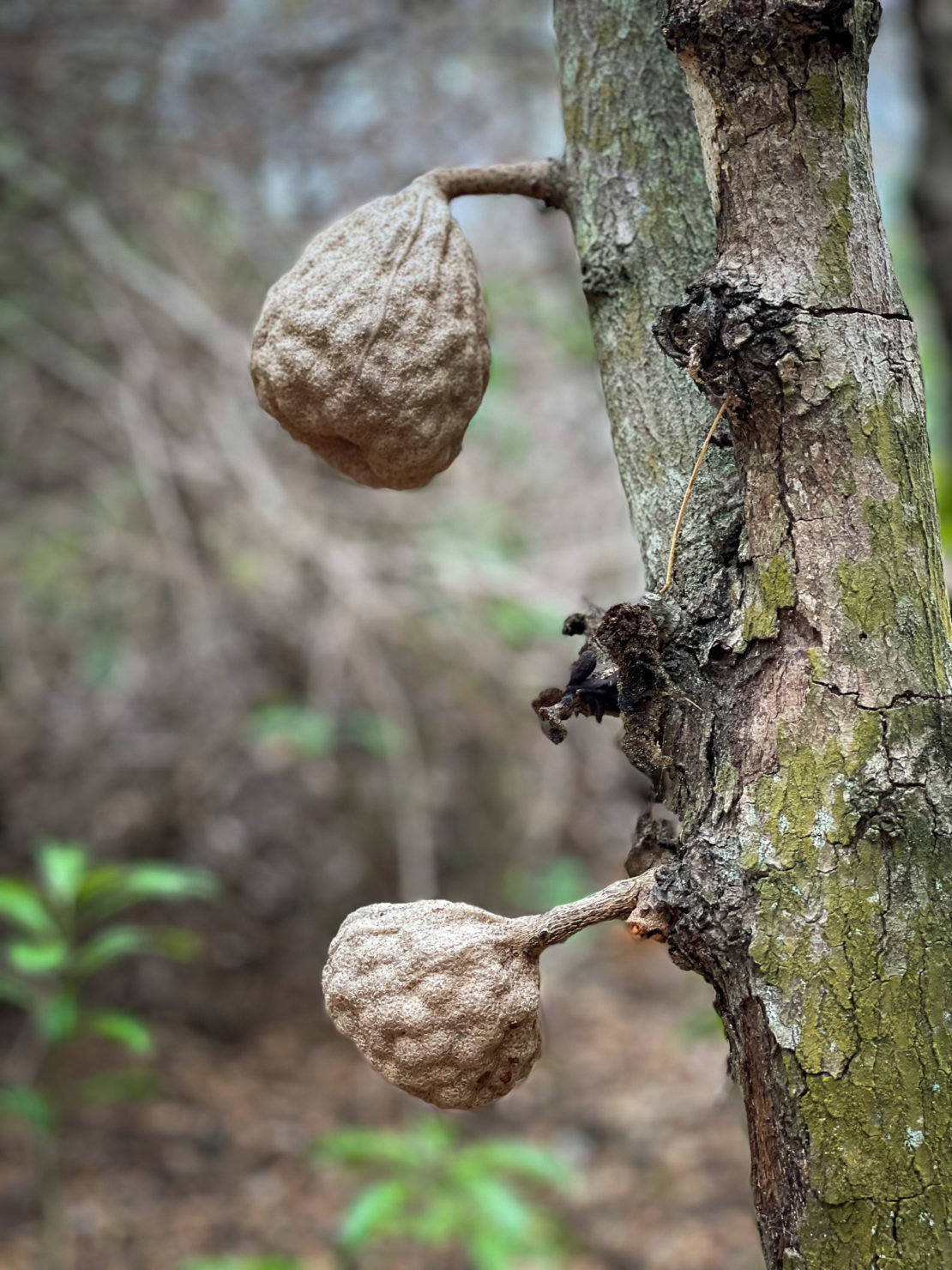
Insights from professionals
“Anything standing after a cyclone is indigenous,” he told me as he led us from the beehives into the forest. “Black ebony is straight, straight, straight and used to be used by sailors for a mast. It’s incredibly slow growing and the hotel only has five.”
Twenty nine members of staff run this eco-tourism project, whose mission becomes all the more apparent when Kirkby stops to highlight one tree in particular.
“This is the loneliest palm in the world,” he tells me. “It’s the only one left of its kind.”
And just in case, dear reader, you were wondering as I was about the palm heart salads that appear everywhere, that edible sort is not from an endangered palm.
Mangroves
Then, there is the mangrove. British troops ripped out the mangrove swamps, which successfully eradicated malaria. However, unfortunately not only do rare fish breed in mangrove swamps but the best defence against tsunami is the mangrove.
So, now Sunlife are involved in a regenerative project, inviting guests to “adopt a mangrove.”
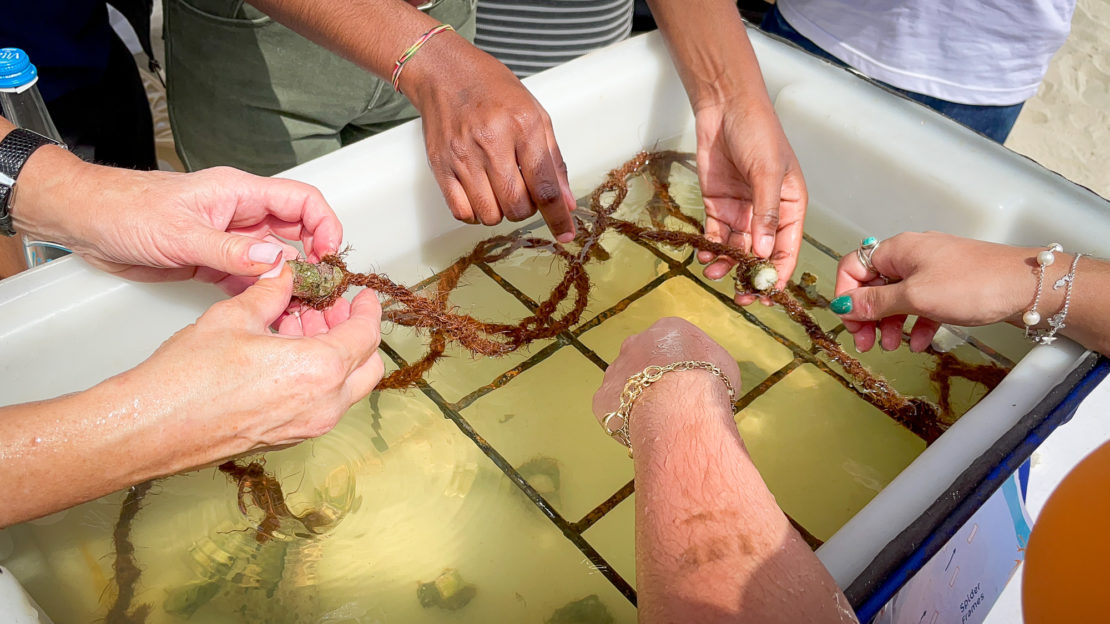
Coral Nursery
Coral may look pretty but, of course, its importance goes far deeper than that. Coral provides a habitat for seaweeds and sea creatures and forms a buffer zone around Mauritius which protects its shoreline – and survival.
Yet coral is under threat, with climate change and El Nino leading to coral bleaching and decay.
To help combat this, Sunlife employ three full time marine scientists who run the coral nursery. They collect coral that washes up after a storm, cut it into pieces and tie it to rope in the sea in the nursery. There it stays, and hopefully grows, for the next 3-4 years until it can be set free.
Guests can snorkel out to see the nursery or attend one of the educational sessions on the shore. Children can follow their marine discovery programme, with quizzes and certificates to prove their hard work.
La Pirogue Marine Center also conducts research into coral bleaching at Flic en Flac, in partnership with universities across the world.
Sustainability Manager Ali Abdool
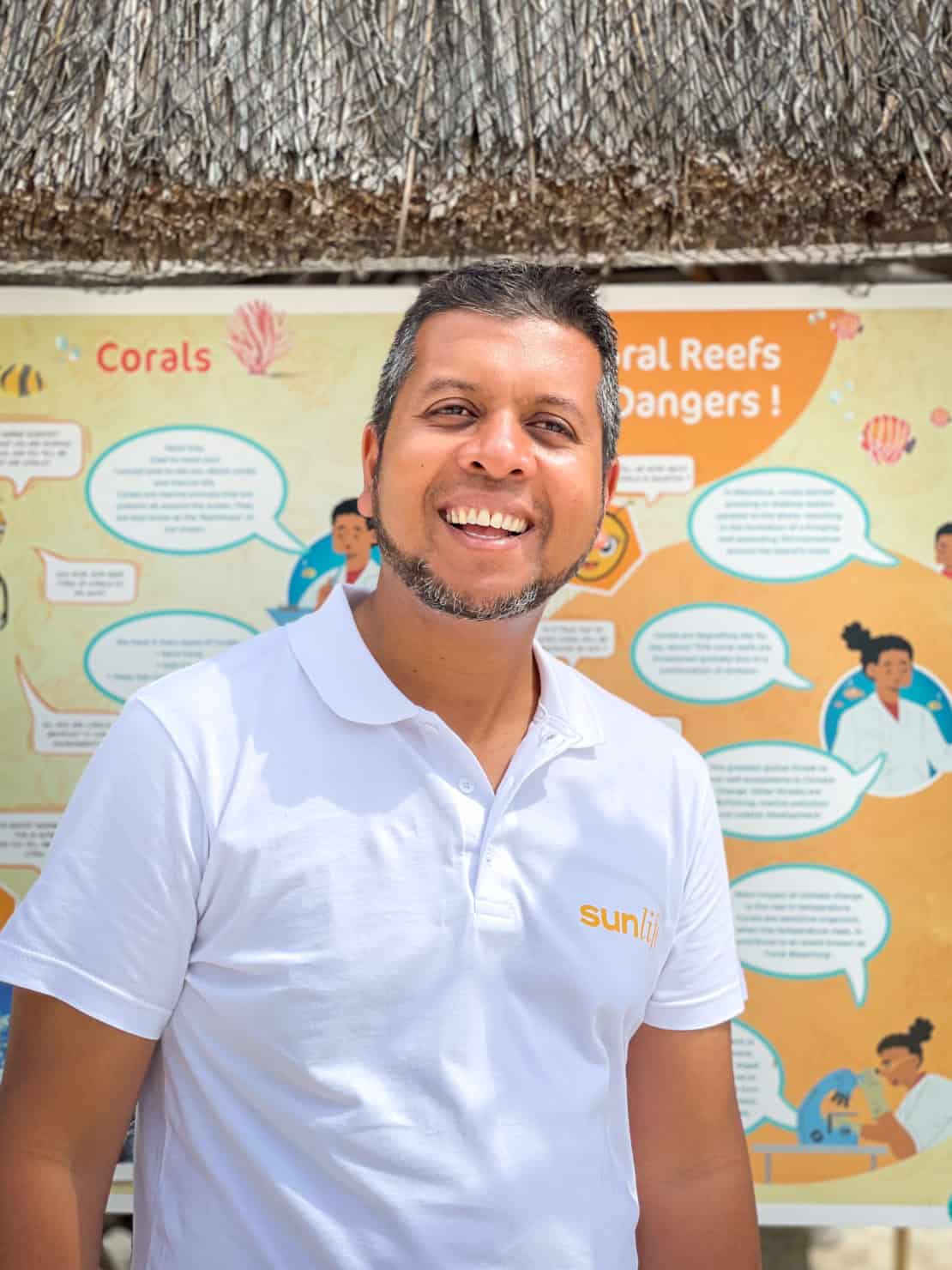
Ali Abdool began his professional life as a chartered account in London. Then, at the University of Surrey, he chose the topic of sustainable tourism as his final dissertation topic.
His professor told him: “You come from a beautiful island. You must do something about it.”
Now, he heads up the sustainable initiatives at Sunlife, overseeing the coral nurseries and endemic gardens, switching amenities to refillable bottles of soap, working with universities around the world on research – and suffering the indignities of having to get his message out to journalists.
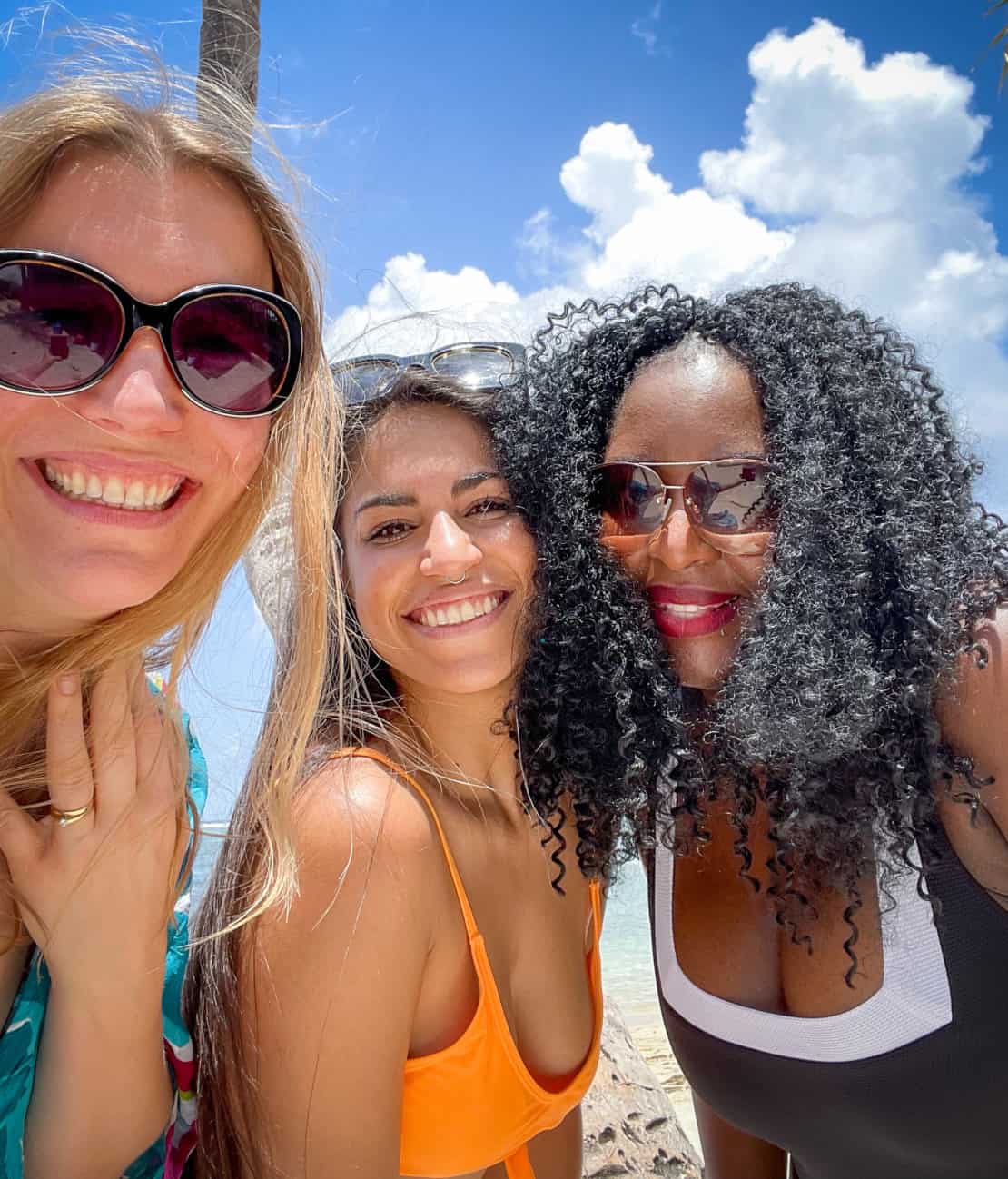
Where to Stay When Visiting Mauritius: The Sunlife Hotels
Let’s be honest, for most people, the initial drive to travel to Mauritius comes from dreaming about living the sweet life in the middle of a natural paradise. On each side of the island, you will find luxury resorts with spectacular accommodation, either on the beach or hidden between trees and flowers.
But if you’re interested in finding out more about the traditions and cultures of Mauritius and having a great holiday, then here are some suggestions.
Sunlife is a popular family of hotels in Mauritius, with four key places to stay: three hotels on the main island and one on the nearby Ile aux Cerfs, an idyllic islet in the largest lagoon in Mauritius.
So which one is right for you? After a recent inspection, let me walk you through the options.
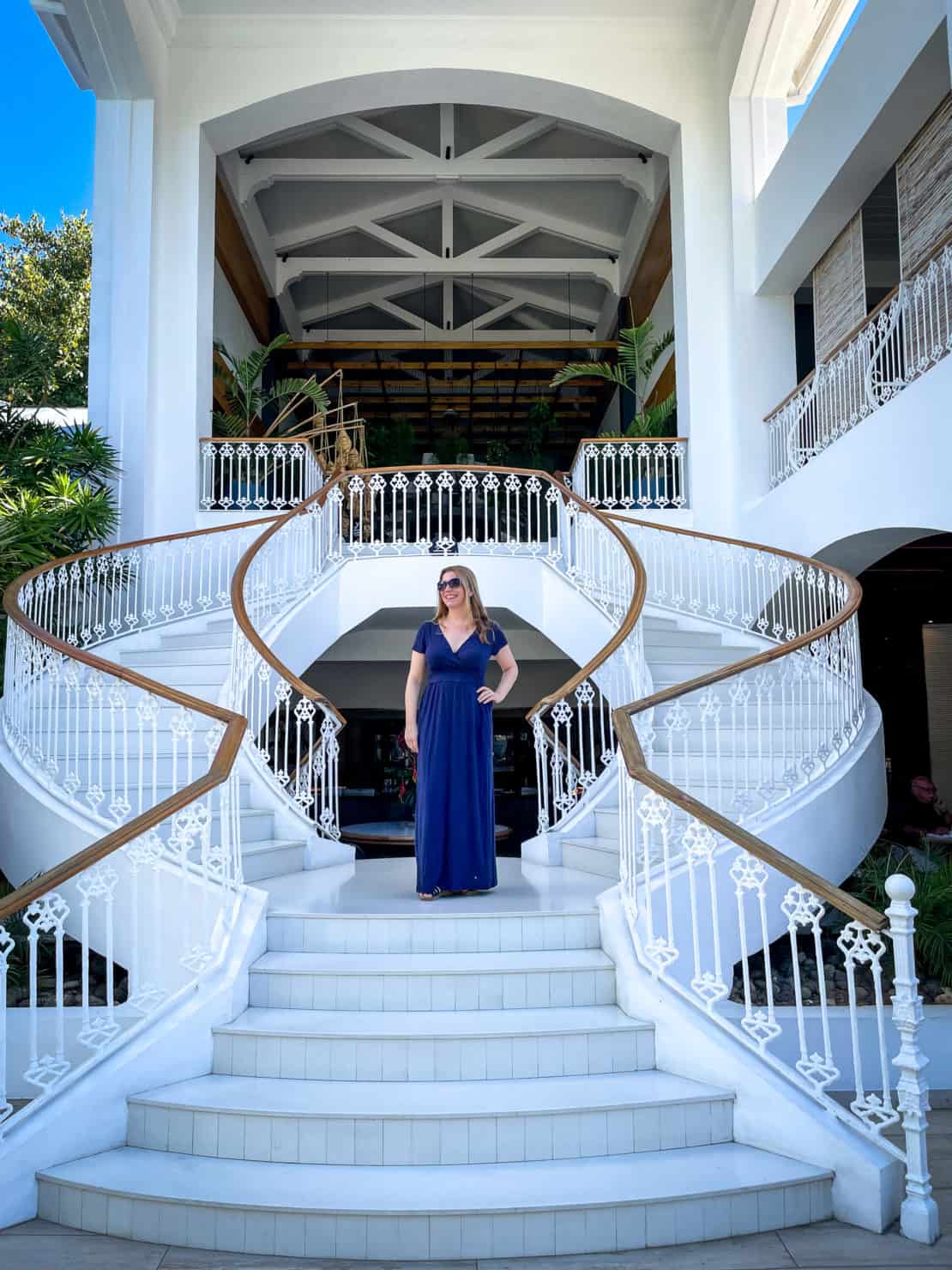
Sugar Beach
Located on the west coast of Mauritius, Sugar Beach is a grand, five star affair, suitable for families, couples and singles. It has a 1.5-kilometre-long beach with pristine white sands and three swimming pools, plus a conference room, tea room and beach bar.
Luxury Rooms within a Tropical Paradise
Sugar Beach’s rooms are small sanctuaries within walking distance of the main facilities. The Deluxe rooms are situated on either the ground or first floor with views of either the sea or tropical gardens.
Premium Rooms with sea views give you direct access to the beach and more space, whilst a Premium Suite comes with a separate lounge and private terrace for spending evenings listening to the waves.
Last but not least, the Executive Beach Front Suite brings you all of the above plus more space and a walk-in wardrobe. Sugar Beach also offers three premium disabled rooms equipped with ramps and accessible bathrooms.
Dining at Sugar Beach
From sunrise to sunset, the restaurants and bars at Sugar Beach are open for breakfast, lunch, dinner, afternoon snacks, afternoon tea, buffets and so on. It’s only middle of the night snacks where you’ll fend for yourself. The sunset at The Buddha Bar Beach is fantastic, and the Tea Room reimagines the British afternoon treat in local Mauritian flavours.
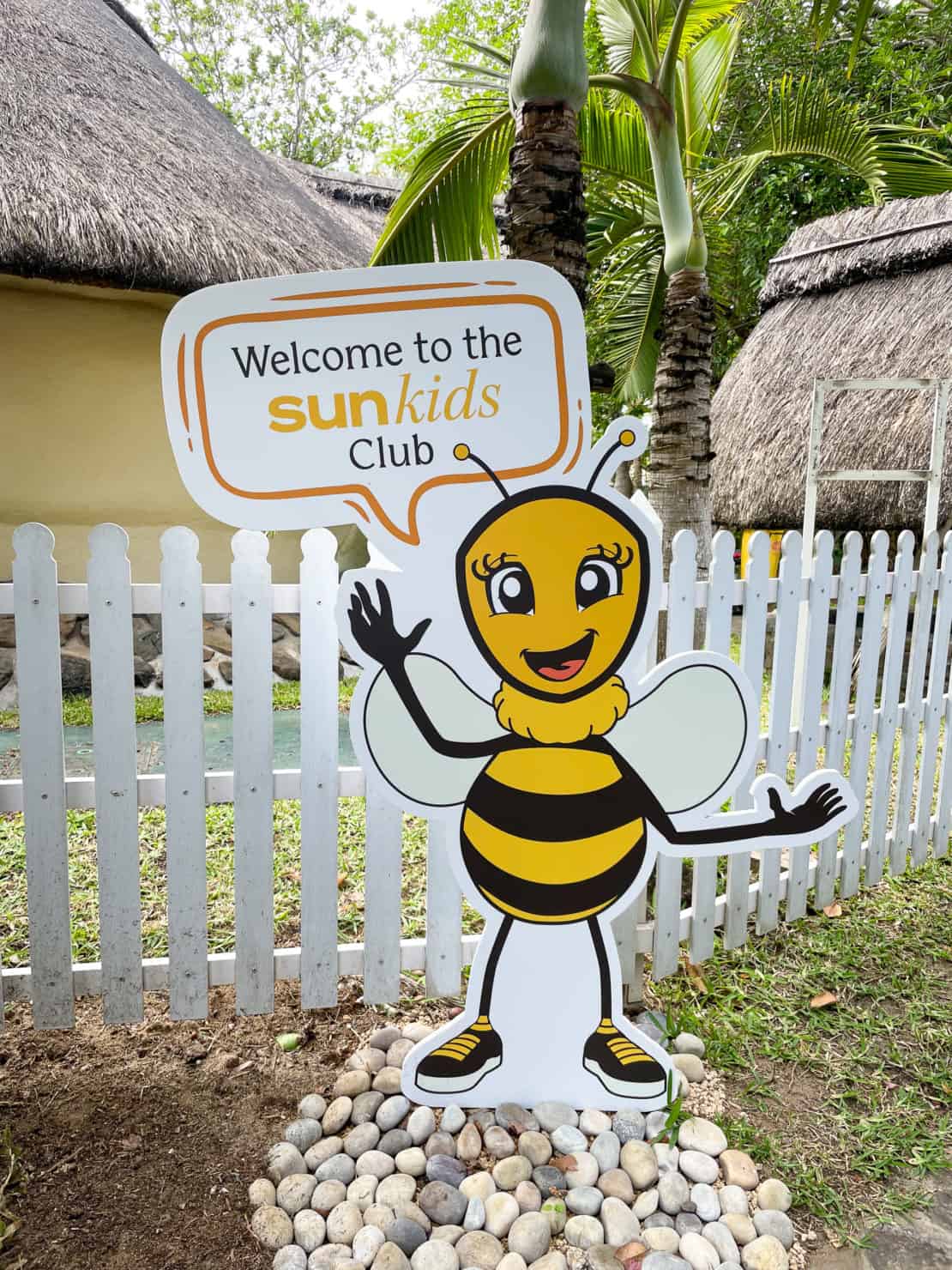
Fun for the Whole Family
The hotel has a kids club which offers activities from arts and crafts to water sports and dinner events with buffets serving kid-friendly food. For parents with small kids who need to take a break, nannies and babysitters are available for a fee.
Even reluctant teens may have the adventure of a lifetime as they get the chance to meet people their own age at the Teens Club. Campfires, pizza nights, and recreation programs – these are only a few of the activities they can try.
Spa or Golf?
The spa area at Sugar Beach features a hammam, treatment rooms, a huge fitness centre and even a dedicated area for martial arts fans.
If you are a golf lover, you can access the two golf courses that the four Sunlife hotels share: Tamarina Golf Club and Ile aux Cerfs.
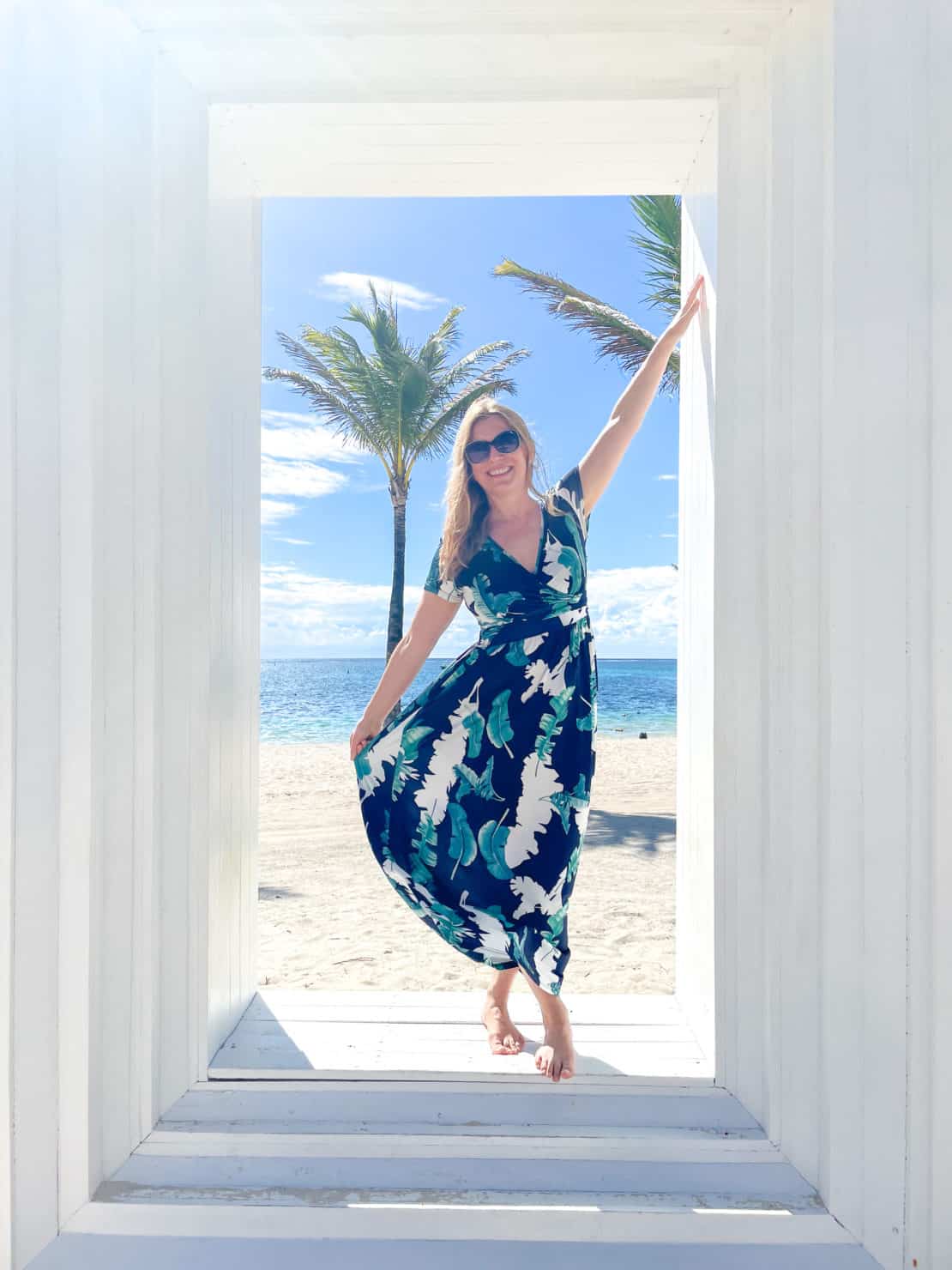
Long Beach
Long Beach is a five star resort located on the east coast of Mauritius, right on, you guessed it, a long beach. This hotel has more of a honeymoon vibe with an adults only infinity pool, although families are welcome in the main pool
Lovely Rooms & Suites for Families of All Sizes
Rooms at Long Beach come decorated in a bright contemporary style with private terraces that open towards either the sea or palm fringed gardens. Junior suites come with different features like quick pool access, perfect for morning swimmers, or easy ocean access for those who like a walk on the wild side.
The Family Suite provides a separate sleeping room for the kids, whilst honeymooners who want to splurge will find the Executive Suite perfect for their first days as a married couple.
For disabled guests, Long Beach has two dedicated suites, so one less than Sugar Beach.
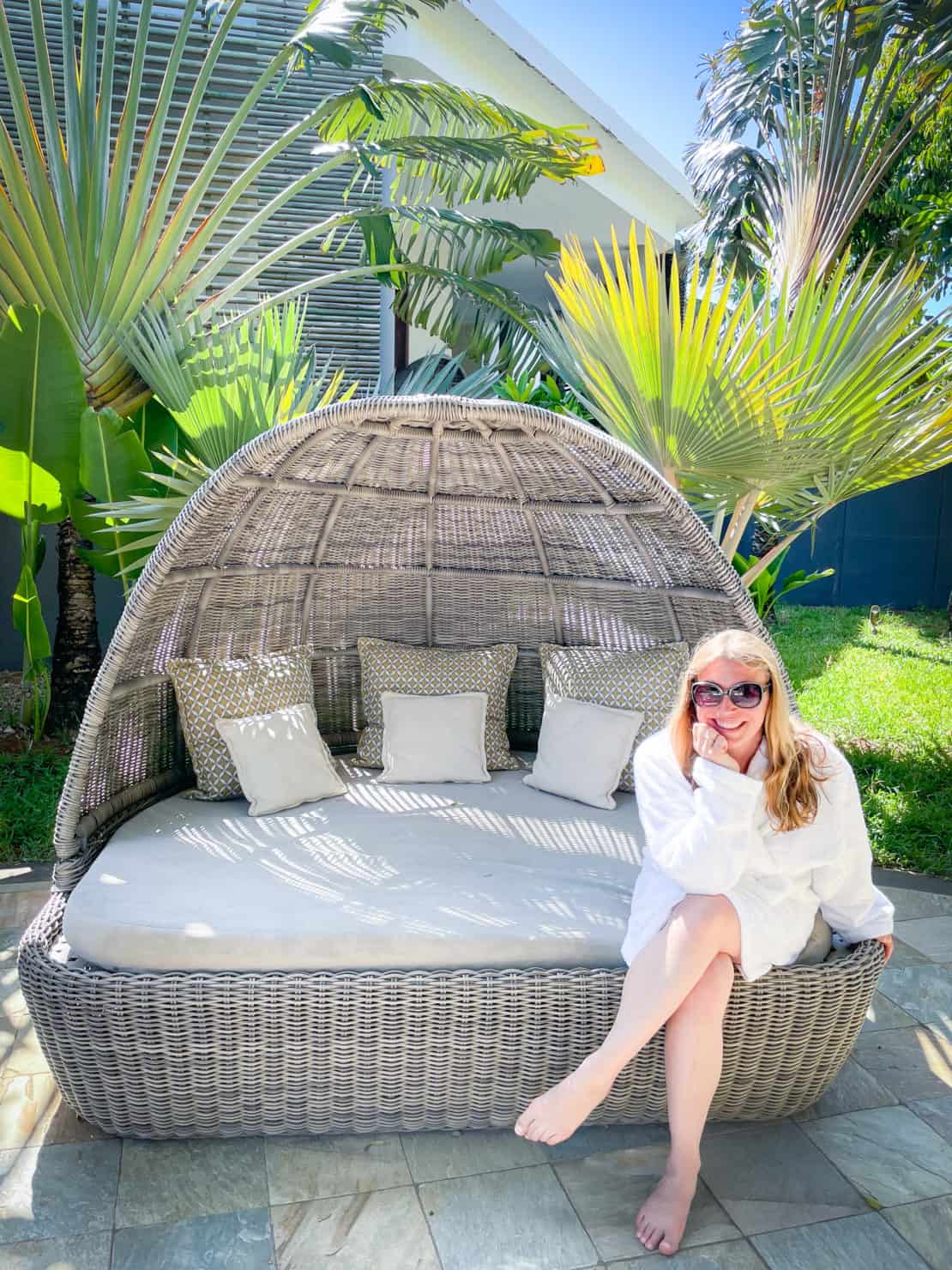
A Wellness Retreat
With a spa centre hidden inside its own private garden, Long Beach is the perfect spot for body and mind treatments. Afterwards, you can watch the rustle of the leaves and listen to birdsong and truly forget your cares in the world.
Kids and Teens Clubs
There are clubs for small children up to 11 years old and teens (12 to 17 years old) that offer lots of activities like swimming and tennis classes, mixology, DJ sessions, kayaking, wall climbing, football, and so on.
Kids under 12 eat for free, and there are food stations serving pizza and barbecues for fussy eaters. Moreover, the kid-dedicated spaces in the hotel rooms are equipped with Wi-Fi and large TVs, for when they get tired of outdoor activities.
Experience the Multicultural Cuisine of Mauritius
You can try Thai, Chinese, or Indian-inspired dishes at Chopsticks or go for an unforgettable dining experience at Hasu, an adult-only restaurant where ancient Japanese dishes are brought to life by world-class chefs. Sapori specialises in Italian cuisine, whilst the two bars within the resort are open all day long, offering mixology courses along with the cocktails.
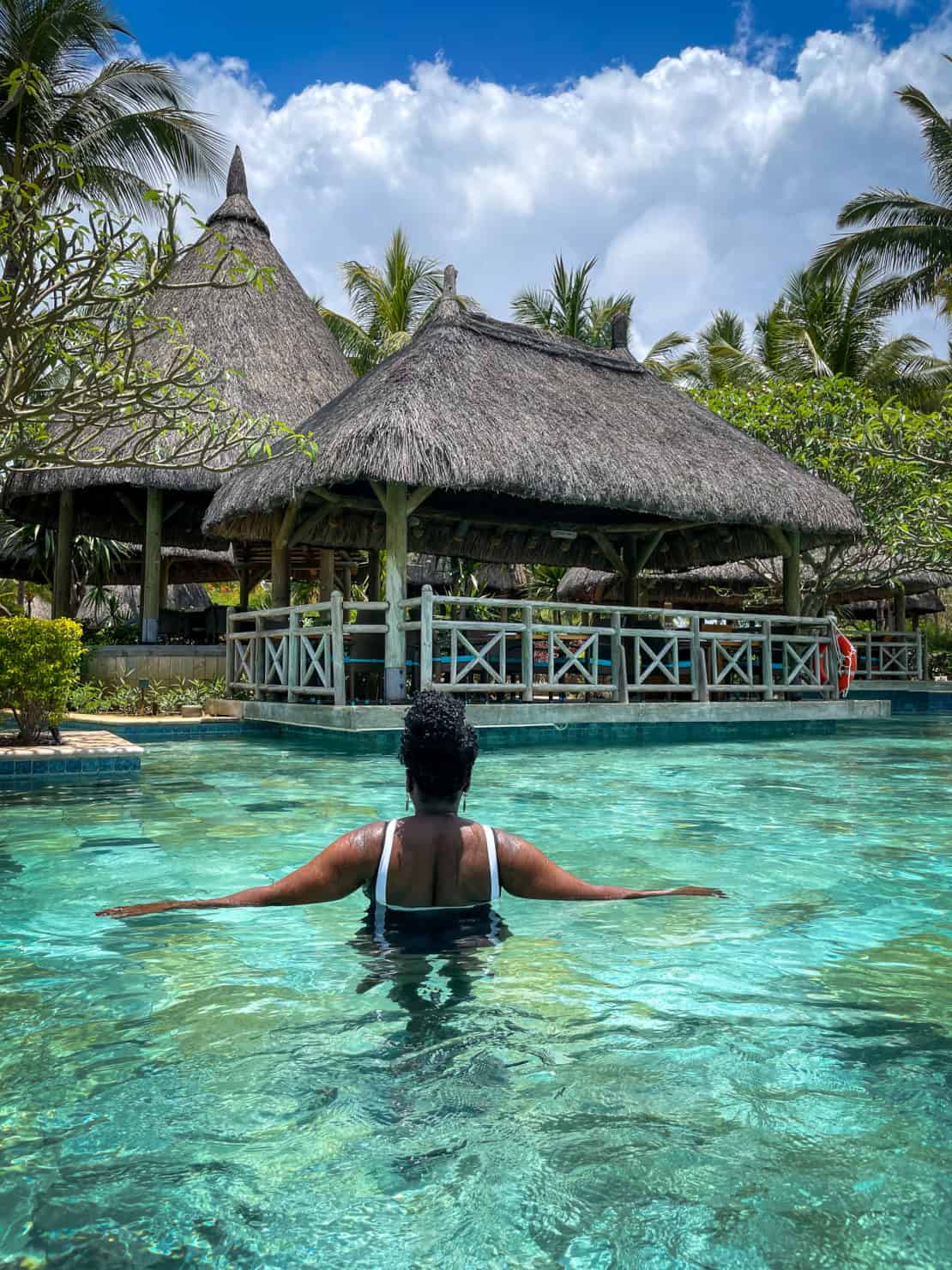
La Pirogue
The oldest resort on the west coast, the four star La Pirogue continues to be one of the most popular even after other hotels have sprung up around it. The concept is original, with rondavels and bungalows hosting guests in traditionally inspired accommodation.
There’s no doubt that La Pirogue is the most traditional of the Sunlife hotels, with a relaxed boho vibe and plenty of chances to taste local cuisine.
Romantic Pavilions and Bungalows
The thatched roofs and sloping ceilings of the pavilions are inspired by the traditions of Mauritius and the whole complex is decorated with colourful art.
The beach pavilions are just a few steps from the sand and the plentiful rattan chairs and sunbeds.For those who prefer the coolness of the forest, there are bungalows placed right in the middle of a coconut grove, with private terraces as well. The uppermost luxury comes with the Senior Suite Pavilion, which offers a private gazebo on the beach.
La Pirogue, like almost all Sunlife hotels, is suitable for guests with disabilities.
Discover the Local Cuisine and Traditions
La Pirogue is simply divine when it comes to food, with no fewer than six restaurants and bars serving amazing creole dishes and colourful cocktails. Magenta Seafood is the soul of the place, with fish-based cuisine, local music, and Sega dancing.
Spa & Golf
La Pirogue shares the Cinq Mondes Spa with Sugar Beach and offers access to Tamarina Golf Club and Ile aux Cerfs.
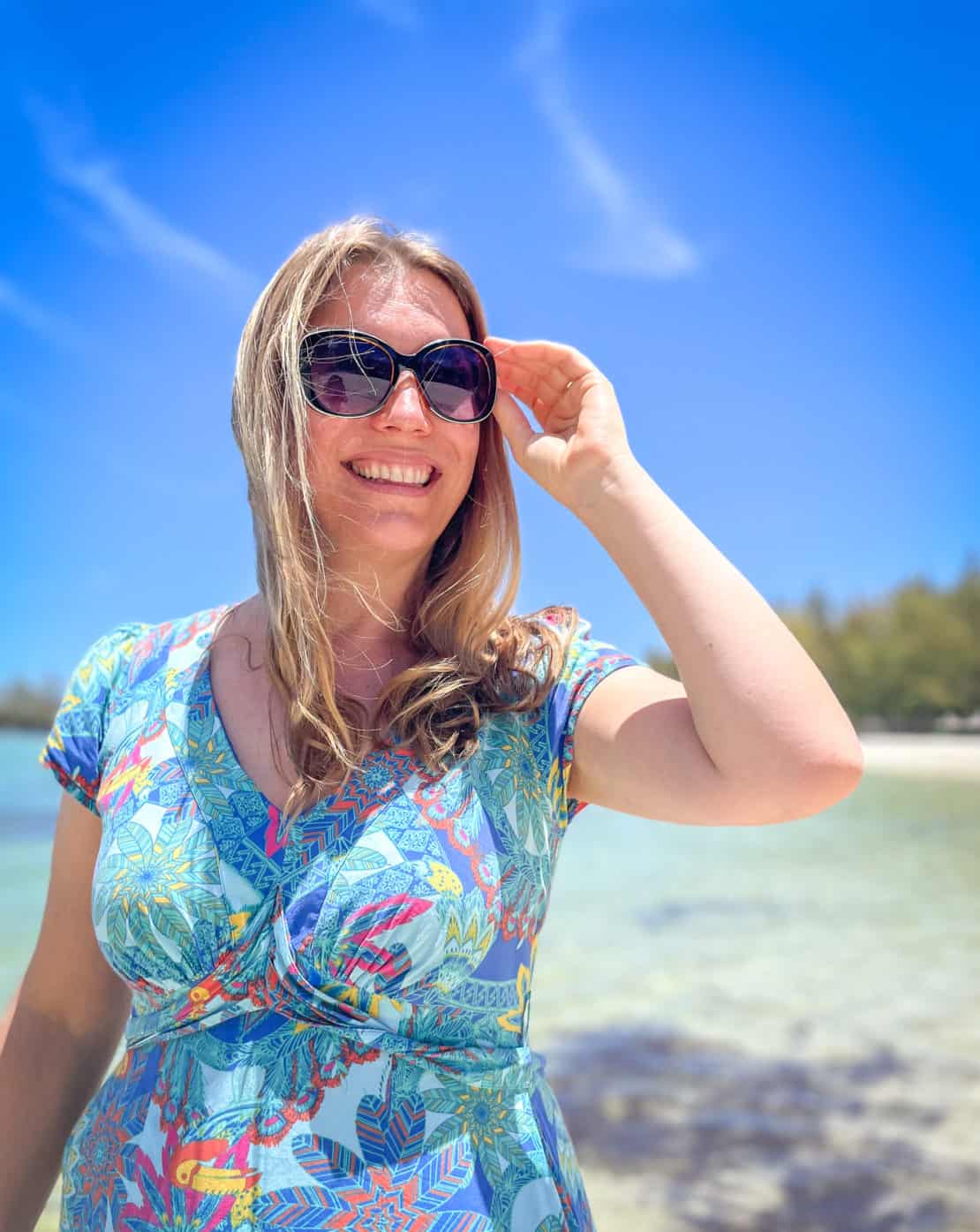
Ile aux Cerfs
For a more exclusive experience, you can book a night or two at the bubble lodges at Ile aux Cerfs – or just visit for a day trip.
Ile aux Cerfs is a small, uninhabited island east of Mauritius and is, therefore, practically untouched by the noise and pollution of everyday life. You can only reach it by boat and almost all visitors head back to Mauritius after 6 PM. As a result, it is utterly, utterly divine.
The Ultimate Golf Experience
Ile aux Cerfs is famous for its 38-hectare golf course designed by the world-renowned golf champion Bernhard Langer. The course has 18 holes and is set in incredible scenery with lakes, volcanic rocks, and, of course, the ocean.
Although, if you don’t care about golf at all, that’s fine too. Hitch a ride in the buggy down to the beach and enjoy fresh, healthy food outdoors while you float away all your cares.
Spend the Night in a Bubble Lodge
Try out a unique experience in Mauritius by spending the night in one of the three bubble lodges hidden in the foliage. Once the island clears out, there will be only you and a few other people, so you can almost experience what it would be like to be alone in the world.
However, this venture may not be for everyone. Although the views are magnificent, there is no Wi-Fi, if you can imagine that.
There aren’t too many food options either – just the golf course restaurant. But you will taste some of the freshest fish around, as the chefs pair seafood with seasonal fruits and vegetables.
Is Ile aux Cerfs Family-Friendly?
Not enormously. Although there’s enough space in the bubbles for children, there aren’t many other activities around nor many different food options. Ile aux Cerfs is also particularly accessible because of its isolated location.
More about Mauritius
Move beyond the culture and traditions of Mauritius with the following articles about this gorgeous island:


